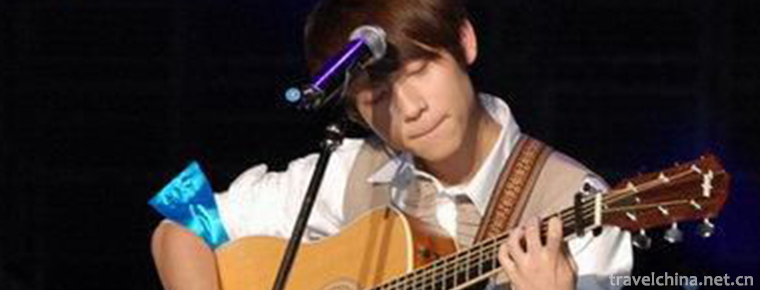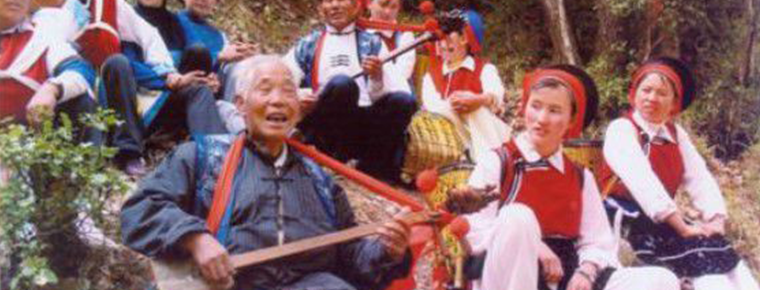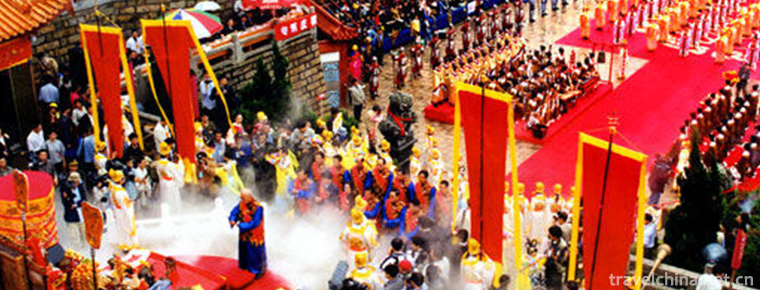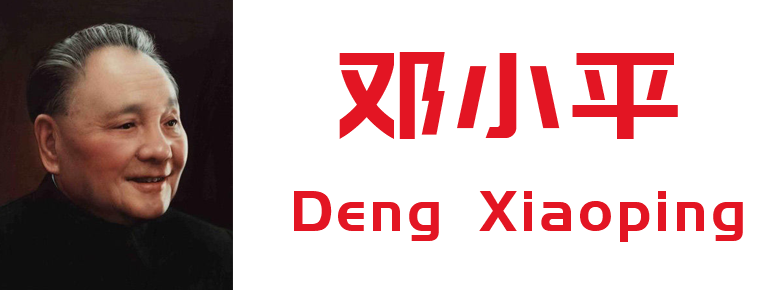Mongolian Sihu Music
Mongolian Sihu Music
Mongolian Sihu music is one of China's intangible cultural heritage. Mongolian Sihu is one of the most distinctive Mongolian musical instruments, stringed instruments. Mainly spread in northern China, Mongolian, Han and Mongolian territory. As an accompaniment instrument in rap form, there are also ensembles and solos.
In 2006, it was listed in the national intangible cultural heritage list.
historical origin
Sihu has a long history. It originated from Xi Qin of Xi Department in northern China. After the 13th century, Sihu has spread in Mongolian areas. In the palace murals of Alatan Khan in the 16th century, a female musician with a slender rod, a cylindrical speaker, a four-pronged instrument with the back end of the piano head and a horse-tail bow between strings was painted, which is exactly the same as today's Sihu performance image. After the Yuan Dynasty, the art of Sihu was widely spread, once popular in Inner Mongolia Autonomous Region, Liaoning, Jilin, Heilongjiang and North China, and had a far-reaching impact on Han folk rap and singing. Tongliao City, located in the hinterland of Horqin grassland, is the most prosperous area of Sihu art at present. Up to the Qing Dynasty, Sihu, also known as the "violin", was used in the court music ensemble, and the shape of the Sihu of today's Mongolian people is vivid.
Mongolian four-hu can be divided into three categories: high-pitched four-hu, middle-pitched four-hu and low-pitched four-hu. High-pitched four-hu is bright and crisp, mostly used for solo, ensemble and ensemble; medium-bass four-hu is rich and mellow, good at playing Lyric music, and mainly accompanied by the Horqin national rap and singing art Uliger and Helibao. They play a very important role in the cultural life of the Mongolian people. The representative repertoires of Mongolian four-hu include "Running on the Road", "Bayin", "Asr" (above is Big Four-hu), "Modleima", "Curving Grapevine", "Lotus Yinghua" (above is Little Four-hu) and so on.
artistic characteristics
High-pitched Sihu
Mongolian bow and string singing instrument. Also known as Mongolian Xiaosihu. It was reformed on the basis of folk Xiao Sihu. The tone is clear and crisp. It can be used for Solo and instrumental ensemble. It is popular in Inner Mongolia, Liaoning, Jilin, Heilongjiang and other provinces and regions. The tone is clear and melodious, beautiful and pleasant, and the volume is large. The playing skills of left hand include glide, tremolo, striking, overtone, double tone, double tone, double overtone, etc. The right hand technique is similar to Erhu. It is mainly used for solo, ensemble and instrumental ensemble. Ordinarily played in duet or ensemble with such instruments as the baritone four-hu, the horsehead, the three-stringed, the Atoga or the Huoxi. The more famous high-pitched four-hu performers are Sun Liang, Chao Lu, Wu Yunlong, Zhao Shuanghu, Qing Gretu and Mandula. The traditional music of high-pitched Sihu includes: Bayin, Huayao Diao, Lotus Yinghua, Han Xiuying, Indelema, Nong Enjia, Asr, and Running. The compiled music includes: Mongolian Eight-tone Twelve, Asr Twelve, Eastern Mongolian Folk Song Ensemble, Happy Grassland, White Jun Horse, Young Herdsman and Taming. Horsehands, etc.
Baritone Sihu
Mongolian bow and string singing instrument. Popular in Inner Mongolia, Liaoning, Jilin, Heilongjiang and other provinces and regions of agricultural and semi-agricultural and semi-pastoral areas. Shape with bass four beards, slightly smaller. The piano tube is cylindrical and is welded with thin brass sheets. The tube is 16 cm long and 10 cm in diameter. The front of the tube is covered with Python or cowhide. The outside of the tube is fastened with copper hoops. The back end of the tube is open and copper frame is set inside the opening. The piano pole is made of a whole block of rosewood or wood and sandalwood. Its length is 90 centimeters. The head of the piano is flat, with four axes on it, four wire strings or copper strings on it, and two horsetails of fine bamboo are bows with a bow length of 68 centimeters. Playing posture, methods and techniques are the same as bass four-hu. The baritone Sihu has two octaves, and its tone is mellow and bright. It can be used for solo, ensemble, instrumental ensemble or for rap music such as storytelling and singing. It is the main musical instrument in Sihu Quartet and folk ensemble. It is often played with treble four hu, and with treble four hu, horsehead, three strings, fire and other instruments ensemble. The more famous baritone four-hu performers are Sun Liang, Chao Lu, Wu Yunlong, Zhao Shuanghu and Qing Gretu. The repertoire of the baritone Sihu solo is the same as that of the soprano Sihu, and there are many adaptations of the Sihu Quartet.
Bass Sihu
Mongolian bow and string singing instrument. Also known as the Big Four Hu and the Haolaibao Four Hu, they are widely used in pastoral areas and semi-agricultural and semi-pastoral areas of Inner Mongolia Autonomous Region. The bass four-hu in pastoral areas can be assembled and disassembled into several parts, i.e. a barrel, two poles, chord axis and bow, for easy carrying. The piano barrel was first hollowed out with a whole piece of wood into a cylindrical shape. It was 30 cm long and 15 cm to 20 cm in diameter. The front of the barrel was covered with sheepskin, horseskin or calf skin, and the back of the barrel was open. Later, the piano barrel was made of hardwood into round, hexagonal or octagonal shapes. Wooden piano pole, mostly two, 110 cm in length, with four bowel strings, silk strings or copper strings. The bow is made of wood or willow branches and is tied with horsetail at both ends. The length of the bow is 85 centimeters. It is mainly popular in Zhelimu League, Zhaowuda League and Xingan League. Mainly used for Mongolian rap and singing good Laibao and Mongolian singing Uliger accompaniment. The traditional music of bass Sihu includes: Wanli, Ganglaima, Lotus Yinghua, Bayin, etc. The compiled music includes: Pythagus, Bayin Bangzi and Running.
Representative works
Asr, Laoban and Mongolian Bayin, Wanli, Ganglaima, Lotus Yinghua, Bayin, Pythagus, Bayin Bangzi and Running
Inheritance significance
Mongolian Sihu culture has rich accumulation, rich expression, self-contained skills, melodious melody, simple, is the outstanding music creation of Mongolian people engaged in semi-agricultural and semi-pastoral production mode. It has high academic research value in Mongolian history, culture, folklore, and cultural exchanges between China and foreign countries.

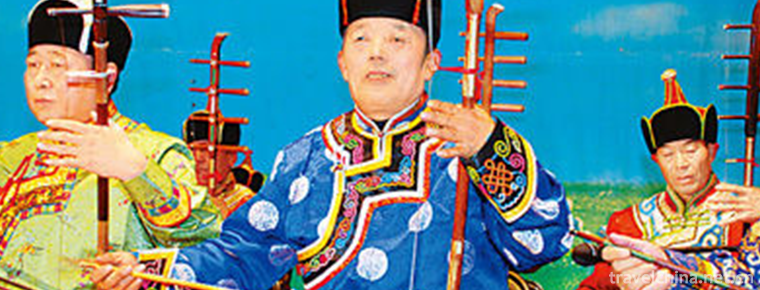
-
Bay Leaf Jing Making Skills
In June 2008, the technique of making bay leaf Scriptures was listed in the national intangible cultural heritage protection list. The Beiye Sutra (Dai for "lazy") refers to the Buddhist.
Views: 132 Time 2019-04-04 -
play and sing at the same time
To play and sing is to accompany with instruments and sing by oneself. Generally, guitar, piano and so on. In China, there are also folk instruments such as three strings and pipa..
Views: 208 Time 2019-04-25 -
Ancient Platform Building Skills
Architectural skill of ancient stage is an important traditional skill in folk architecture. In the traditional techniques of ancient stage construction, sawyers, big woodworkers, small woodworkers.
Views: 146 Time 2019-05-01 -
Kazakh Aytes
Kazakh Aytes is a typical representative of Kazakh folk art, a competitive form of performance, is the most abundant content of Kazakh folk oral literature, the most influential literary type among th.
Views: 229 Time 2019-05-02 -
Jianchuan Opera
Jianchuan Baiqu is an ancient music variety with a long history and wide spread in Bai nationality area. It is mainly popular in Jianchuan, Eryuan and Tongdian, Jinding and Jiuhe of Lanping County, Nu.
Views: 308 Time 2019-05-05 -
Mazu memorial ceremony
Mazu Festival, which originated in Song Dynasty, experienced Yuan, Ming and Qing dynasties and continued to expand and enrich. By the Qing Dynasty, Mazu was named "Tianhou", and the title re.
Views: 204 Time 2019-05-15 -
Eyebrow household
Eyebrow households, distributed in Shanxi, Shanxi, Shaanxi, Gansu, Western Henan and other provinces, also known as "Eyebrow Shao" or "confusion", are named for their euphemistic m.
Views: 86 Time 2019-05-31 -
Deng Xiaoping
Deng Xiaoping (August 22, 1904 -1997 February 19th), formerly known as Deng Xiansheng, the scientific name of Deng Xixian, Guang'an, Sichuan. Go to Europe early Work study program After his return, he.
Views: 329 Time 2019-09-07 -
And then I met him 66 Hu Tik Tok Songs 2020 Hot Songs
Hey, do you still think of me Like I cry sometimes at night I was so happy that I thought you were the end To give you everything Time is always disobedient and starts to play dumb.
Views: 487 Time 2020-05-21 -
Jinhua Alsophila Nature Reserve
Jinhua Alsophila spinulosa nature reserve is a provincial nature reserve approved by Sichuan Provincial People's Government in 1987. In sifangjinggou, Jinhua Township, 48 kilometers southwest of Rongxian City.
Views: 155 Time 2020-10-15 -
Shenhai well
Zigong Shenhai well is located at the foot of ruanjiaba mountain in Da'an District, covering an area of 3 mu, with an altitude of 341.4 meters. The well was excavated in the third year of Daoguang in Qing Dynasty (1823 A.D.) and completed in the 15th year of Daoguang (1835 A.D.), which lasted 13 years.
Views: 141 Time 2020-10-15 -
Jiufeng Mountain Scenic Area
Jiufeng Mountain is located in Dabao Township in the northwest of Pengzhou. It is about 97 kilometers away from Chengdu, with an altitude of more than 3315 meters. It is the crown of Pengzhou mountains, a sacred and mysterious area.
Views: 220 Time 2020-11-05

